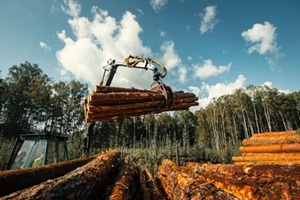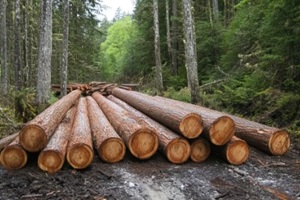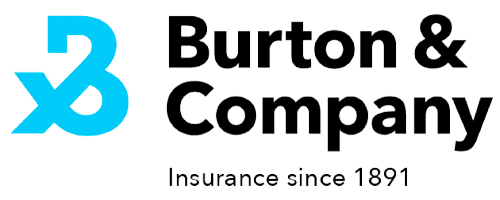
Forestry operations are exposed to significant financial risks on a daily basis, ranging from equipment failures to catastrophic natural events. Extreme weather events represent one of the most costly risk factors confronting forest landowners, with a single tornado in 2014 causing over $14 million in timber damage. While forestry insurance protects against these risks, the cost of rising premiums can strain business budgets.
The good news is that businesses in the forestry industry can take proactive steps to reduce their insurance costs while maintaining adequate protection. Here are seven proven strategies to help lower your forestry insurance premiums.
1. Implement Comprehensive Safety Programs
A strong safety record directly impacts insurance premiums. Companies with fewer claims consistently pay lower rates across all insurance types. Businesses that invest in risk reduction actions can see substantial premium decreases.
Take a proactive posture and develop written safety protocols for all operations, provide regular employee training, and document safety meetings. Include equipment maintenance schedules, personal protective equipment requirements, and emergency response procedures. Insurance companies offer reduced premium rates to businesses that show a commitment to preventing accidents.
2. Choose Higher Deductibles Strategically
Opting for higher deductibles can lead to substantial savings on your annual premiums, although it means you’ll incur greater out-of-pocket expenses when making claims. Deductibles for timber insurance may range from 5% of total timber value to 10% for larger tracts, with minimums of $500 to $1,000.
Calculate your business’s financial capacity to handle larger deductibles. If you can absorb a $5,000 loss versus a $1,000 loss, the premium savings from the higher deductible may be worthwhile over time.
3. Invest in Modern Equipment and Maintenance
Older machinery and vehicles increase the risk of accidents and the frequency of claims. This applies to both on-site forestry equipment and the commercial trucking insurance needed for log hauling and equipment transport. Insurance companies often charge higher premiums for operations using aging equipment that’s more prone to breakdowns and safety incidents.
Maintain detailed equipment maintenance records and replace outdated machinery when financially feasible. Well-maintained, newer equipment not only reduces insurance costs but also enhances operational efficiency and worker safety. Document all maintenance activities to demonstrate to insurers your commitment to equipment reliability.
4. Focus on Ecological Forest Management
Recent research shows that ecological forest management practices can dramatically reduce insurance costs. A study by The Nature Conservancy found that ecological forestry practices, including controlled burning and thinning overgrown forests, can reduce insurance premiums by up to 41%.

These practices reduce the risk of severe wildfires by removing excess vegetation and small-diameter trees that fuel catastrophic fires. While this research primarily focused on residential properties, commercial forestry operations can also benefit from similar risk reduction strategies.
5. Maintain Detailed Documentation and Records
Insurance companies assess risk based on your business history and operational practices. Maintain thorough documentation of safety training, equipment upkeep, incident reports, and claims history. These records demonstrate your professional approach to risk management.
Keep organized files of all insurance policies, certificates of insurance from subcontractors, and safety program documentation. Diligent record-keeping helps underwriters and expedites claims processing when incidents occur.
6. Work with Experienced Insurance Professionals
Forestry insurance requires specialized knowledge due to the industry’s high-risk nature. Partner with agents who understand forestry operations and can identify coverage gaps or opportunities for savings. Experienced professionals can help you structure policies effectively and identify discounts you might otherwise miss.
They can also help you evaluate different insurance carriers, as rates can vary significantly between companies based on their experience with forestry risks and their willingness to work with this type of business.
7. Consider Risk Transfer Through Contracts
When collaborating with subcontractors, make sure they obtain their own insurance and submit certificates of insurance before starting any work. This includes general liability, workers’ compensation, and commercial trucking insurance if they’ll be transporting materials or operating heavy vehicles. This risk transfer strategy protects your business from liability for injuries to subcontractors or property damage.
Incorporate specific insurance requirements within all subcontractor contracts. Specify minimum coverage amounts, require your business to be named as an additional insured, and establish procedures for maintaining current certificates of insurance throughout the project duration.
Understanding Your Coverage Options
Forestry businesses typically need several types of insurance coverage:
- General liability insurance covers claims related to property damage and bodily injuries.
- Commercial trucking insurance covers the specialized vehicles used for transporting timber, logs, and heavy forestry equipment.
- Workers’ compensation provides protection for employees who are injured while performing their duties.
For timber-specific risks, consider standing timber insurance for mature timber ready for harvest, or reforestation insurance for younger stands. Standing timber insurance premiums typically range from 0.5% to 1.5% of the timber value annually, depending on the perils covered.
The Cost of Going Uninsured
Operating without adequate insurance coverage exposes forestry businesses to catastrophic financial losses. Beyond state penalties and legal fees, uninsured businesses must pay all medical bills, property damage, and settlements from their own resources.
The Virginia Workers’ Compensation Commission requires businesses with three or more employees to carry workers’ compensation insurance. Non-compliance can result in civil penalties of up to $250 per day, with a maximum fine of $50,000 plus collection costs.
Find the Right Forestry Insurance Solutions with Burton & Company

Managing forestry insurance effectively requires expertise in both the timber industry and insurance markets. The right coverage protects your investment while keeping premiums manageable; however, finding that balance requires professional guidance.
Burton & Company has been dedicated to supporting Virginia’s forestry and agricultural industries for more than 130 years. Our team is aware of the distinct risks that forestry operations encounter and can assist you in designing a coverage plan that safeguards your business while staying within your budget.
From general liability to commercial trucking insurance for your fleet, we work with you to identify opportunities for premium reduction while maintaining the protection your operation needs.
Contact Burton & Company online or call (888) 652-1325 to discuss your forestry insurance needs and learn how we can help you reduce premiums while maintaining comprehensive coverage.

